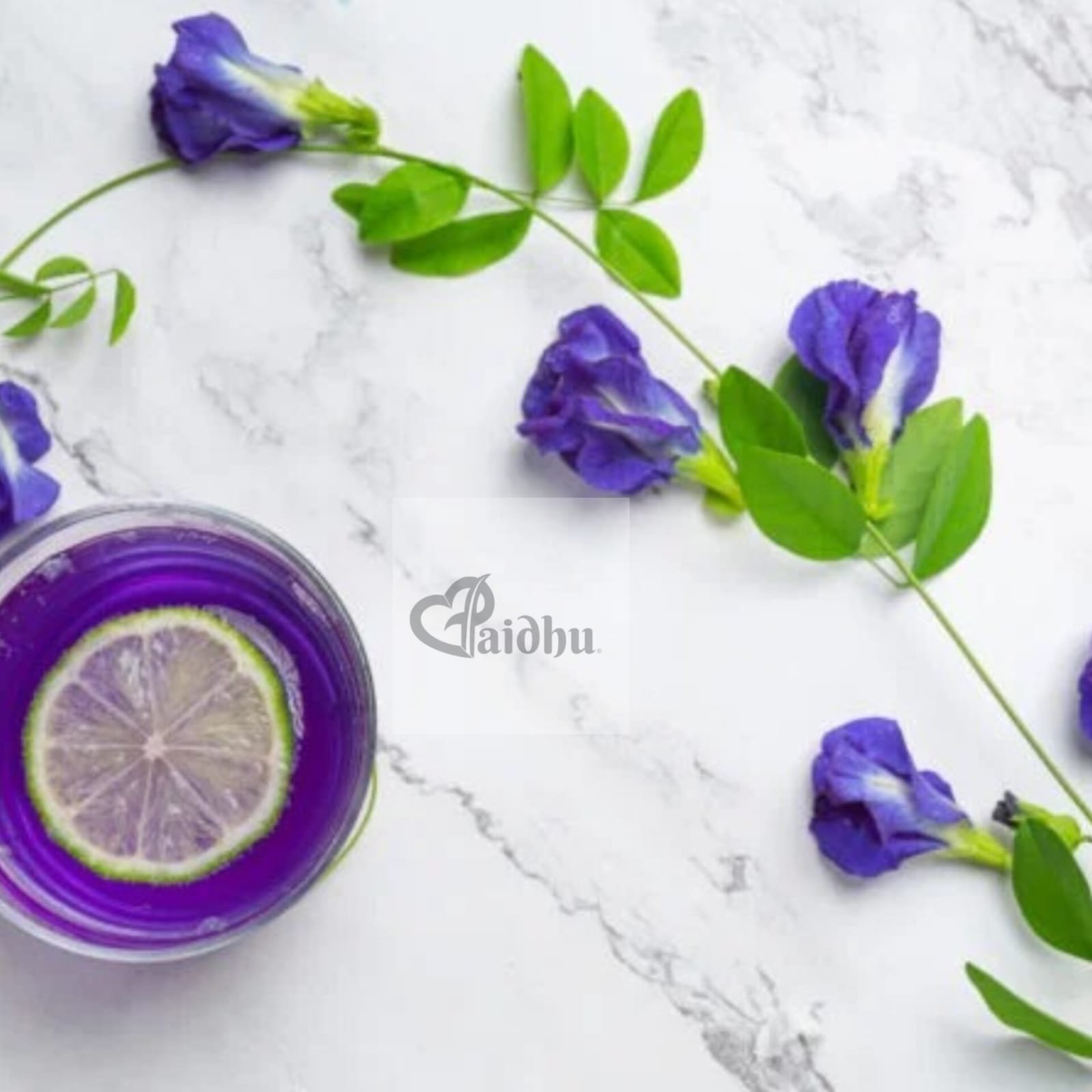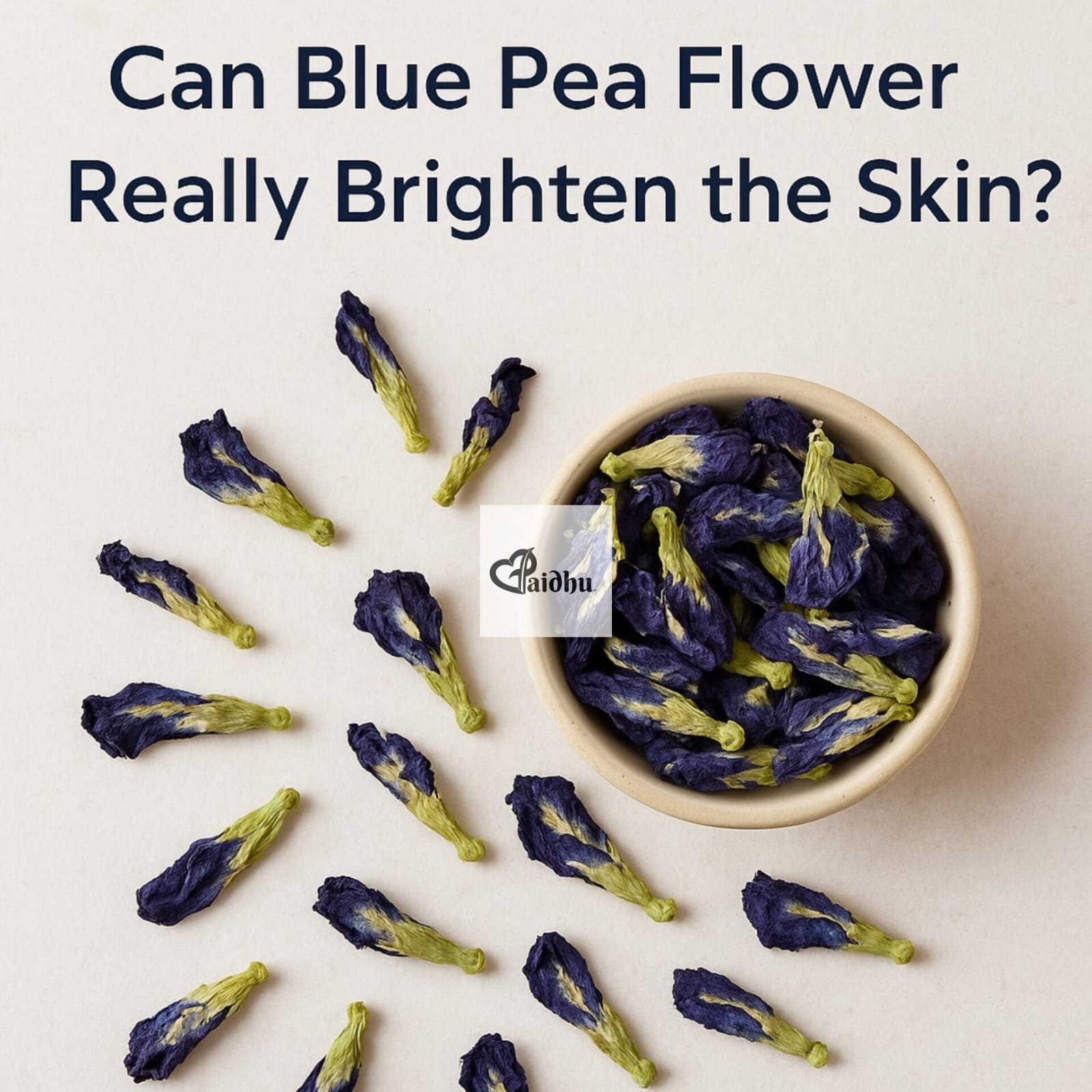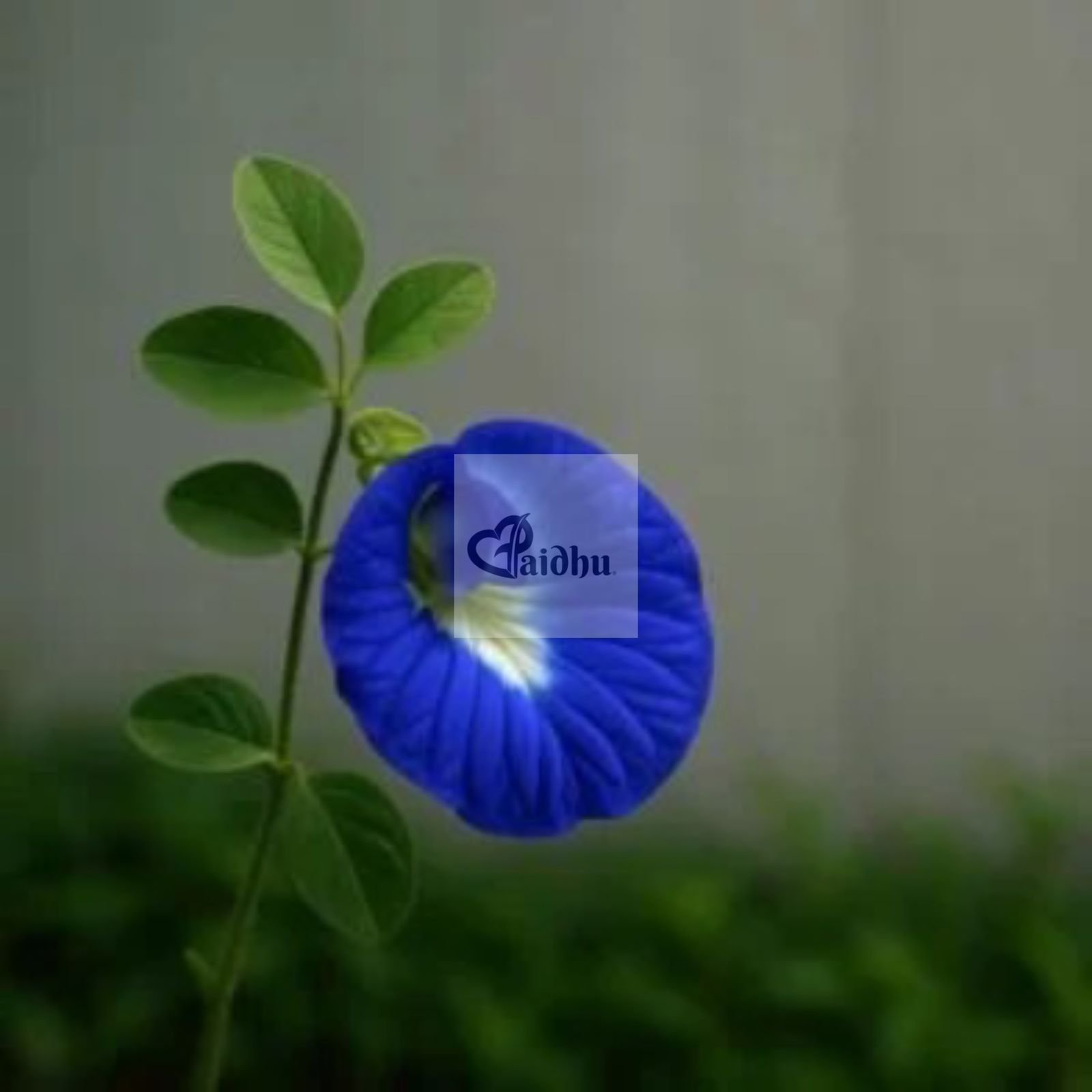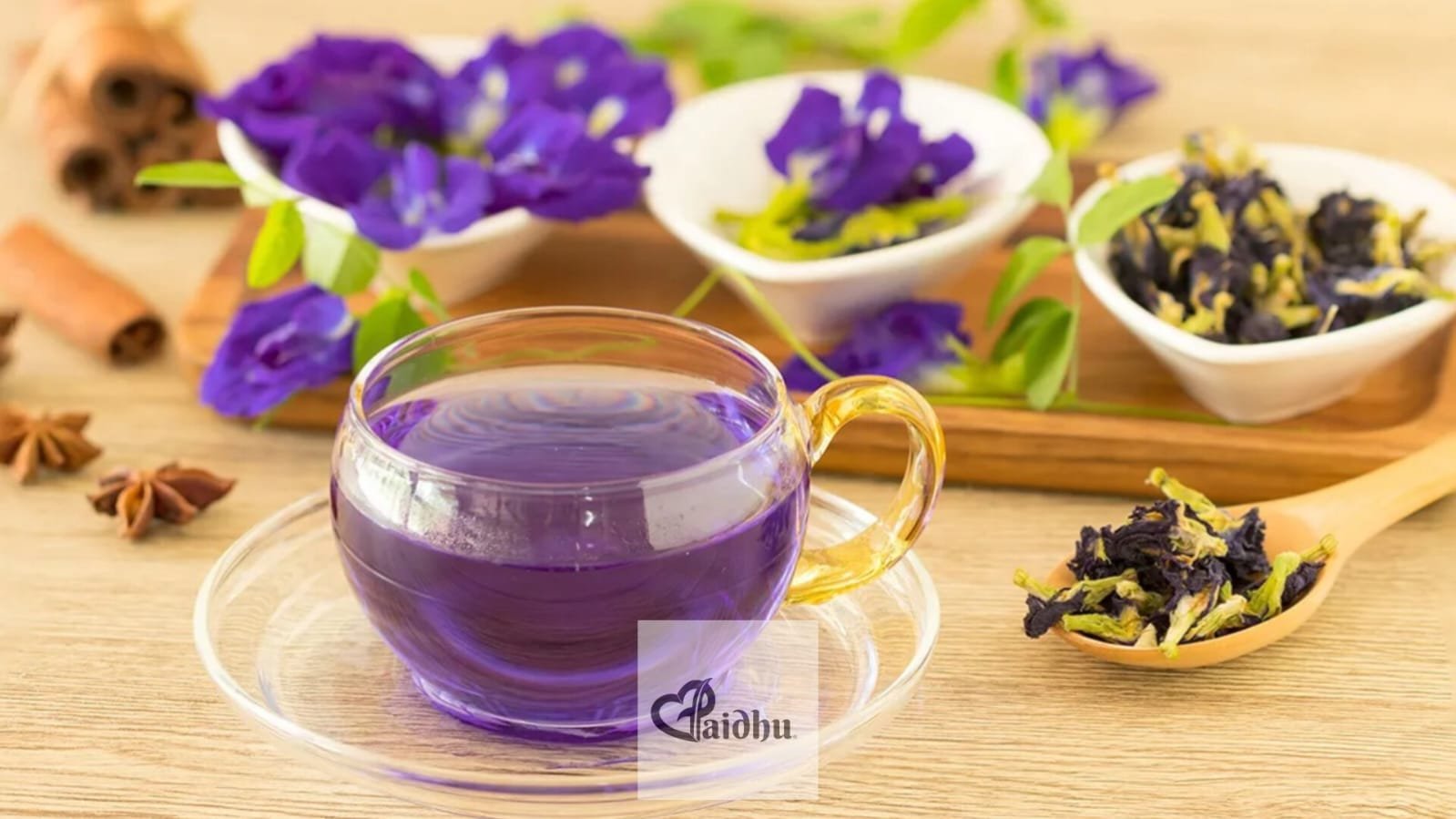At Paidhu, we love little kitchen moments that feel like magic.
And if you’ve ever brewed blue pea tea, you’ve probably seen one:
a deep ocean blue suddenly swirling into violet… then blushing pink.
It’s beautiful.
It’s natural.
And yes—it’s science!
Why Does Blue Pea Tea Change Color?
The secret lies in one word: anthocyanins.
These are natural plant pigments found in blue pea flowers (Clitoria ternatea)—the same family of antioxidants that give blueberries and purple cabbage their deep hues.
What’s cool about anthocyanins? They’re pH-sensitive.
-
In neutral water: the tea is a deep, rich blue
-
Add lemon juice (acidic): it turns purple or magenta
-
Add baking soda (alkaline): it may go towards greenish-blue
So when you add a squeeze of lemon to your blue tea, it’s not just a flavor boost—it’s a color transformation. Like a natural potion. ✨
❝At Paidhu, we like to say our tea reacts to your mood—zesty turns it violet, gentle keeps it blue.❞
Does Blue Pea Tea Have Caffeine?
Nope!
Zero.
Blue pea flower tea is naturally caffeine-free, making it perfect for those:
-
Looking to cut down on caffeine
-
Wanting a calming drink before bedtime
-
Serving herbal teas to children or elders
-
Needing a midday refresh without the jitters
It’s also rich in antioxidants, especially good for the skin, brain, and overall cell health.
Why We Love It
✔ Naturally colorful
✔ Caffeine-free
✔ Versatile (drink it hot, iced, or sparkling)
✔ Great for wellness & Instagram-worthy too
💙 Try This At Home:
Paidhu Blue Pea Mood Tea
– 1 tsp dried blue pea flower
– 1 cup hot water (steep 4–5 mins)
– Add a dash of lemon juice
– Watch the color change… and sip with a smile.
Get your Blue pea dried flowers at https://paidhu.com/





